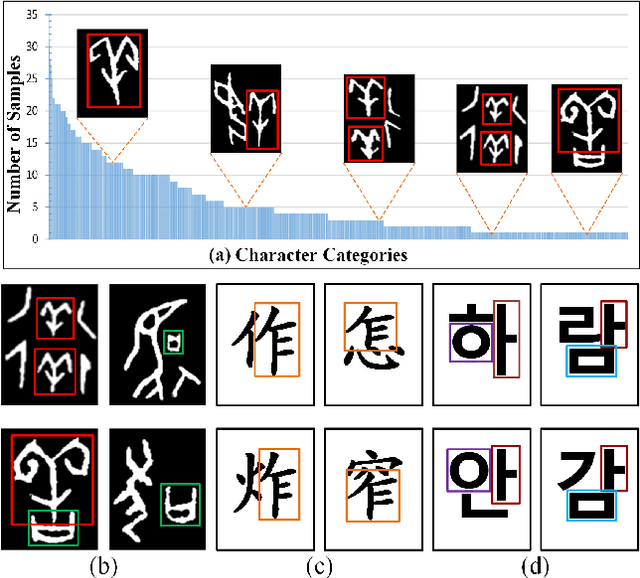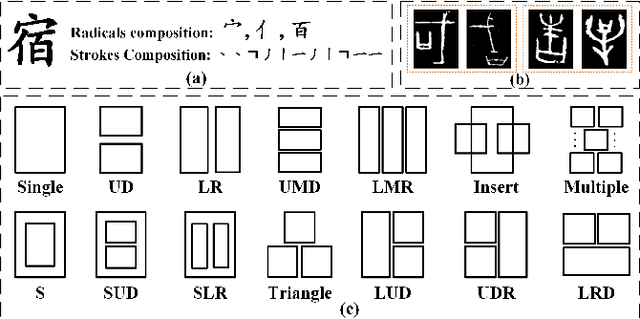REZCR: A Zero-shot Character Recognition Method via Radical Extraction
Paper and Code
Jul 12, 2022



The long-tail effect is a common issue that limits the performance of deep learning models on real-world datasets. Character image dataset development is also affected by such unbalanced data distribution due to differences in character usage frequency. Thus, current character recognition methods are limited when applying to real-world datasets, in particular to the character categories in the tail which are lacking training samples, e.g., uncommon characters, or characters from historical documents. In this paper, we propose a zero-shot character recognition framework via radical extraction, i.e., REZCR, to improve the recognition performance of few-sample character categories, in which we exploit information on radicals, the graphical units of characters, by decomposing and reconstructing characters following orthography. REZCR consists of an attention-based radical information extractor (RIE) and a knowledge graph-based character reasoner (KGR). The RIE aims to recognize candidate radicals and their possible structural relations from character images. The results will be fed into KGR to recognize the target character by reasoning with a pre-designed character knowledge graph. We validate our method on multiple datasets, REZCR shows promising experimental results, especially for few-sample character datasets.
 Add to Chrome
Add to Chrome Add to Firefox
Add to Firefox Add to Edge
Add to Edge